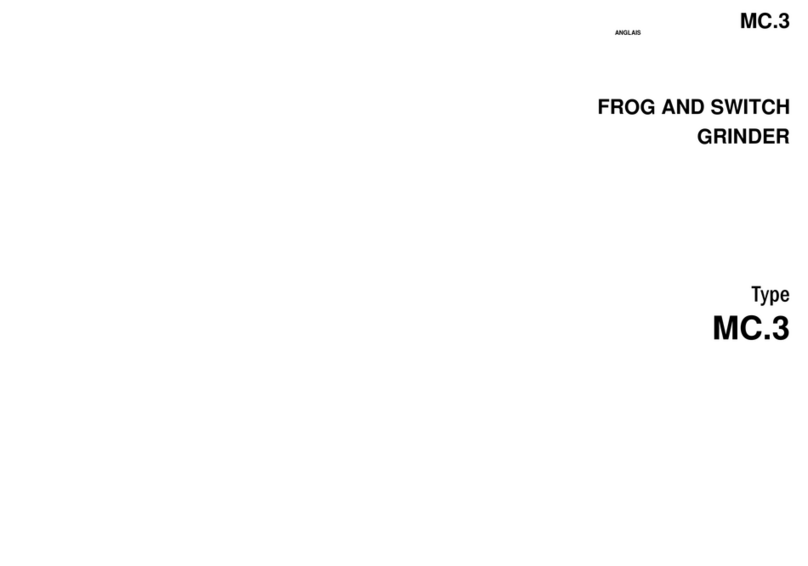
1.3 SECT_Gb_00006_110202.doc 1.3
•Using and handling fuel and oil
It is essential to stop the engine and set the control to the stop position before carrying out any work involving fuel (filling up, checking
the level, draining, etc.).
Always keep suitable extinguishers ready for use in all areas where fuel is handled (storage, filling up, etc.).
Always store fuel and oil in separate cans specially designed for the purpose and bearing the labels required by regulations. They must be stored in a
safe place, well away from all types of fire hazard.
Each time a machine is started up, and while it is running, make sure that there are no fuel leaks from any part of the machine. If a leak is suspected,
stop the engine immediately and do not restart the machine until the leak has been repaired.
Never carry out any work on a fuel tank or handle fuel to fill a tank, or for any other reason, in an area where there could be a fire hazard (such as a
burning cigarette, a blowtorch, sparks, etc.) or substances that are incandescent or at a high temperature (such as welding spatters, slag, clinker, etc.).
All such work must always be carried out outdoors or in a well-ventilated area.
Always turn all mobile phones off while filling a tank with fuel or handling fuel.
Carefully tighten the fuel filler cap each time, and check that no fuel leaks from it.
Always remove a filler cap slowly, to enable any internal pressure to be released without spraying any fuel out. Take special care if the surrounding
temperature is high.
When putting fuel in a machine that has heated up, never fill the tank completely. Do not put in more than three-quarters of the tank capacity.
If fuel starts to boil in the tank when putting fuel in a machine that has heated up, screw the cap on again immediately and leave the machine to cool
down.
Make sure the fuel used is suitable for the type of engine on the machine. See the user manual for the engine.
Do not inhale fuel vapour.
If it is necessary to drain the fuel tank, pour the fuel into a container designed for the purpose and bearing the labels required by regulations. Always
close them tightly, even if they only contain a small quantity. Never use a glass container.
Never use fuel for cleaning work. Use only non-flammable, non-toxic products that are harmless for the user, the equipment and environment.
If fuel has been spilt near the filling area for any reason, clean it up immediately. Clean straightaway any spillage of fuel on the skin. Make sure no
fuel has been spilt on your clothes; otherwise, change clothes immediately. Remove all rags or other materials used to wipe fuel, and store them in a
safe place well away from all sources of heat or combustion. Move the machine well clear of any spilt fuel before starting it up (at least 6 metres
away), and do not move any closer to the area while the engine is running.
I
N CERTAIN CASES HANDLING OIL CAN GIVE RISE TO THE SAME TYPE OF RISKS AS HANDLING FUEL
.
I
T IS THEN ESSENTIAL TO TAKE THE
SAME PRECAUTIONS WITH OIL AS THOSE SET OUT ABOVE FOR FUEL
.




























